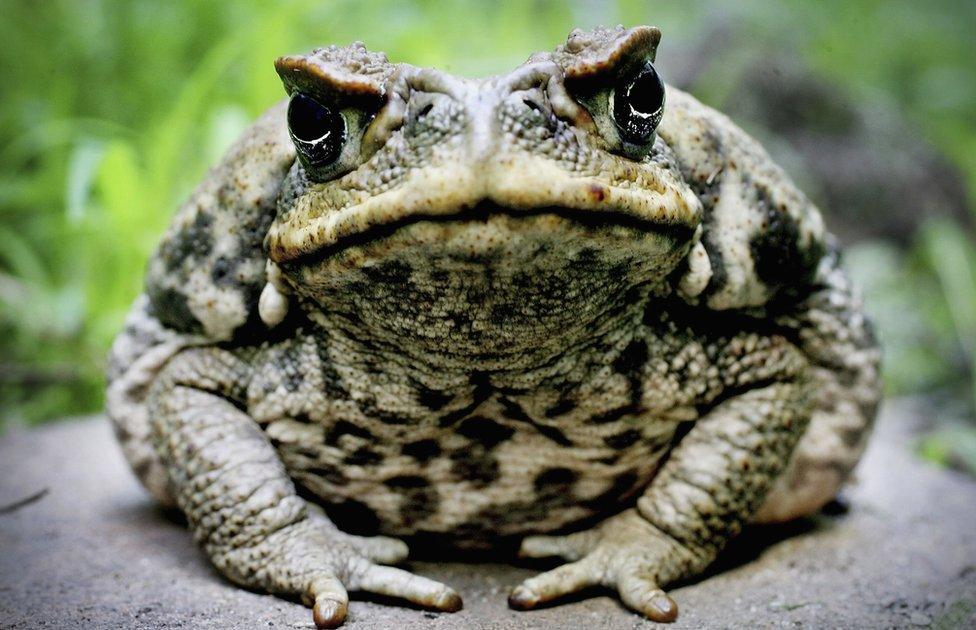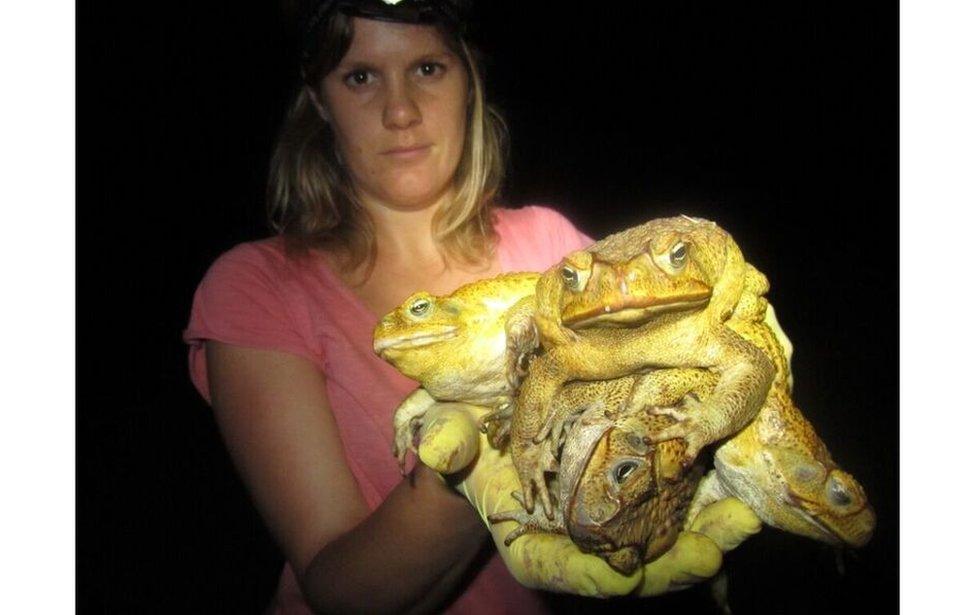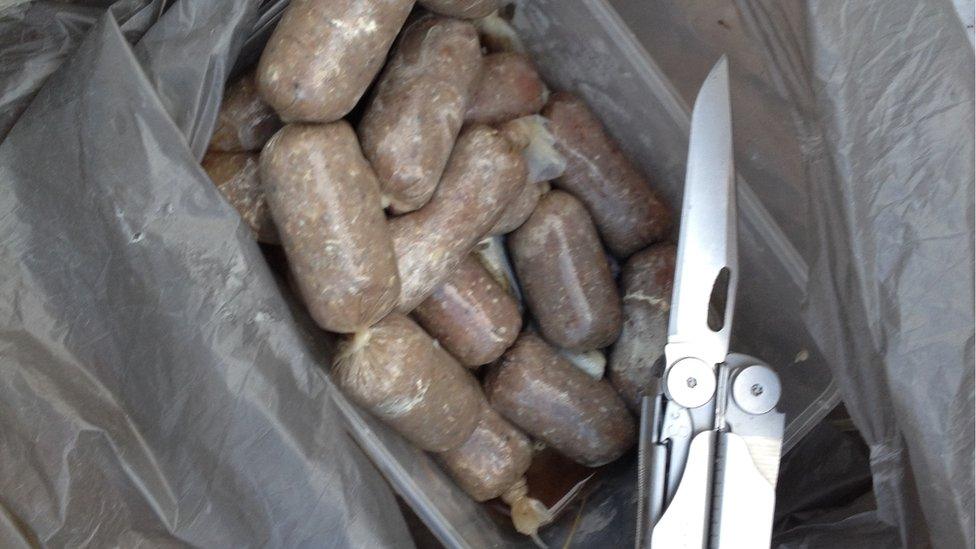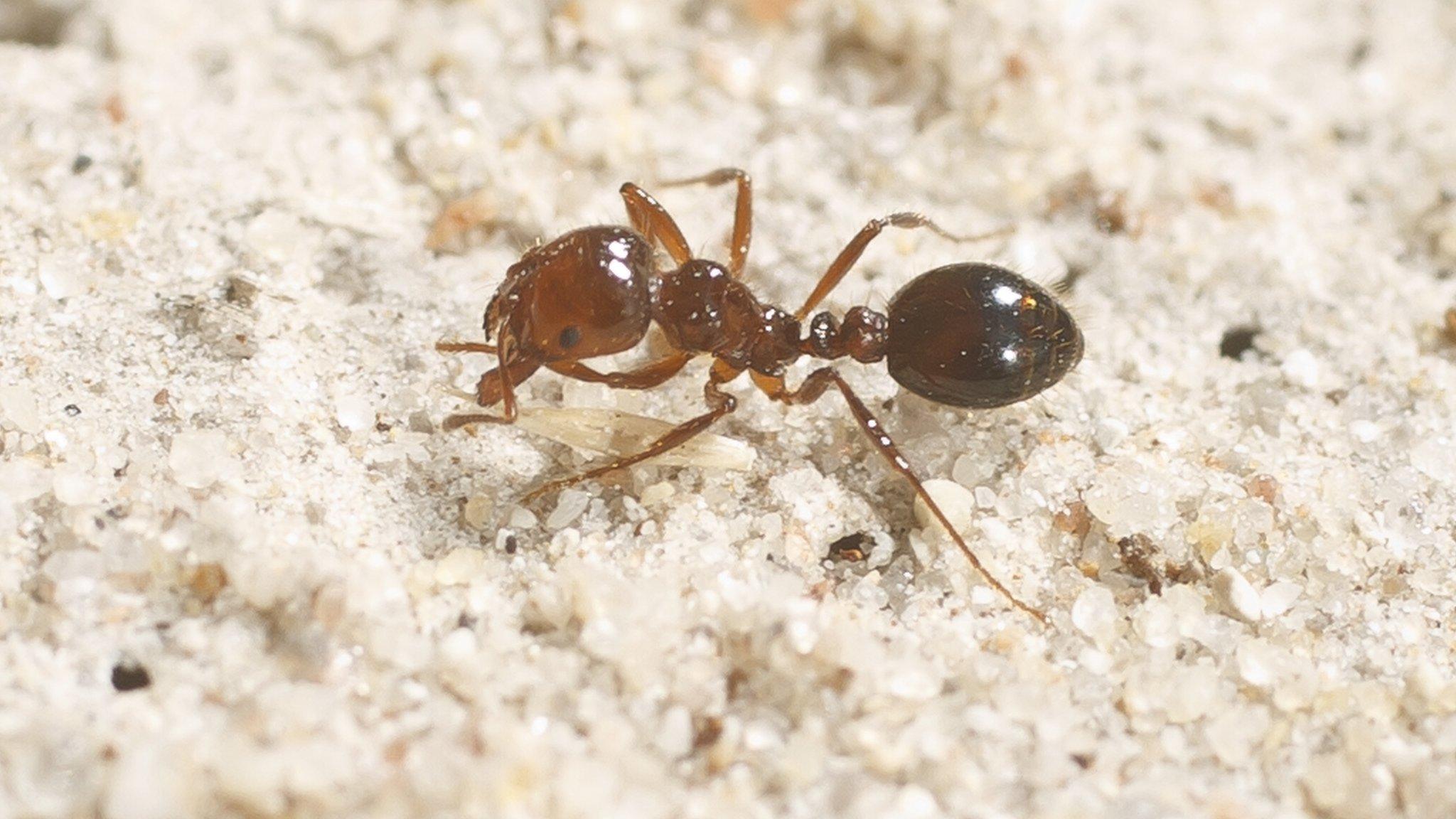The rapid spread of Australia's cane toad pests
- Published

Cane toads were introduced to Queensland from Puerto Rico
They are toxic invaders that have conquered swathes of northern Australia as they continue their seemingly irrepressible march west towards the Indian Ocean.
Packed with poison and supremely adaptable, the dreaded cane toad, or Bufo marinus, has few friends in Australia, where a massive scientific and community effort has failed to stop their advance.
"They probably have moved about halfway through that tropical region of Western Australia," explained Rick Shine, a professor in biology at the University of Sydney. "They are in very inaccessible country now in the Kimberley. It is very hard to get detailed information on exactly where the front is but it seems to be moving at 50 to 60km (31 to 37 miles) per annum."
The warty amphibians move only during the wet season. Although tracking studies have shown many hop less than 10 metres a day, those at the front line have grown bigger and faster.
"The guys at the invasion front up in the tropics are moving often kilometres in a single night and they have evolved this very distinctive behaviour," Prof Shine told the BBC.

"They've actually evolved differences in shape and physiology as well. Essentially they have turned into these dispersal machines and they move as far as they can, as fast as they can."
Experts are reluctant to speculate on how many of these unwelcome pests have been unleashed across Australia's north. They are prolific breeders - some estimates put the figure at around 1.5 billion - but it is impossible to know for sure.
Australia has a long and depressing history of inadvertently introducing wrecking ball species as pets and livestock, or for sport. Examples include foxes, pigs and rabbits, goats, camels and cats.
Invasive plants and fish have also had a dramatic effect on native flora and fauna, but it is the cane toad that is widely reviled above all else.
How did they arrive?
For Australia, the grim story began in the sugar cane plantations of Puerto Rico, which had imported giant toads from South America to eat the grubs that were devouring the crop.
Word spread of the successes of these bug-catching amphibians and by the 1930s, the cane toads were being sent around the world. In 1935, 101 toads arrived in Far North Queensland in areas including Cairns and Innisfail, before being bred in captivity. Their progeny was released on missions to hunt and kill cane-destroying beetles on Australia's north-east coast.
Community toad "musters" have snared countless numbers over the years. In 2005 David Tollner, a former federal MP, famously urged Northern Territory residents to help squash the problem with their golf clubs and cricket bats - effectively turning eradication into sport.

Large cane toads collected in the Kimberley region, in Western Australia
Then there was the so-called "bottom-line" defence supported by the RSPCA in Darwin, which recommended killing captured amphibians by smearing them with haemorrhoid cream, which acted as an anaesthetic.
In 2009, toads crossed the Western Australian border with the Northern Territory, more than 2,000km from the site of their original release 74 years earlier.
It was a dark day that conservationists had both dreaded and seen coming. The invasion penetrated the Kimberley region, an area three times the size of England and regarded as a wilderness frontier.
"Sadly, the Kimberley has lost the battle to the cane toad. They have invaded close to 70% of the Kimberley, so the toads are well and truly on their way to the northern coastal areas," said Lee Scott-Virtue, the president of Kimberley Toadbusters, a group she set up in 2004.
"It has been a really disturbing lesson. The problem is they are adapting to dry, desert conditions. They are adjusting to very cold climates and they are actually starting to breed in saline water."
Most recent discovery
On Wednesday, wildlife rangers revealed a cane toad was found beside a road near Mount Kosciuszko in southern New South Wales. Authorities suspect it was carried in by a tourist, and have not found other evidence of the species there. Nonetheless, they are concerned.
"There are certainly environment and times of the year when such an animal could persist (survive)," Dave Woods, a state wildlife officer, told the Australian Broadcasting Corp.

Cane toads, which carry toxins, can kill large animals such as monitor lizards
He said toads could provide a fresh threat to endangered species in the area, a national park.
The toads are devourers of insects and other small prey, but they are at their most destructive when they are eaten by larger predators, such as snakes, goannas and freshwater crocodiles. A large gland on the toad's shoulder is loaded with deadly cardiac toxins.
In an unusual move, researchers are trying to train predators to avoid larger cane toads by feeding them smaller specimens, which make them ill but should not kill them.
These so-called taste-aversion strategies include feeding sausages made of minced amphibian to northern quolls, a carnivorous marsupial. They eat the meat, which causes vomiting, in the hope it will put them off eating toads again. A large-scale trial is due to start in Western Australia soon.
Corrin Everitt, from the state's Department of Parks and Wildlife, told the BBC that while the project could ensure fewer large predators were lost, it would not halt the invasion.

Rangers will trial feeding cane toad sausages to native animals
"At the moment we're predicting the toads to take at least five years to reach the Broome area," she said.
"They are an amazing animal when you take away all the ugliness about them. You just wish that our native species could be as adaptable and successful in colonising areas as they are."
- Published8 December 2016
